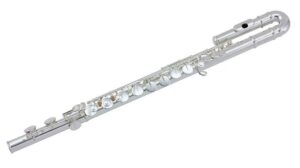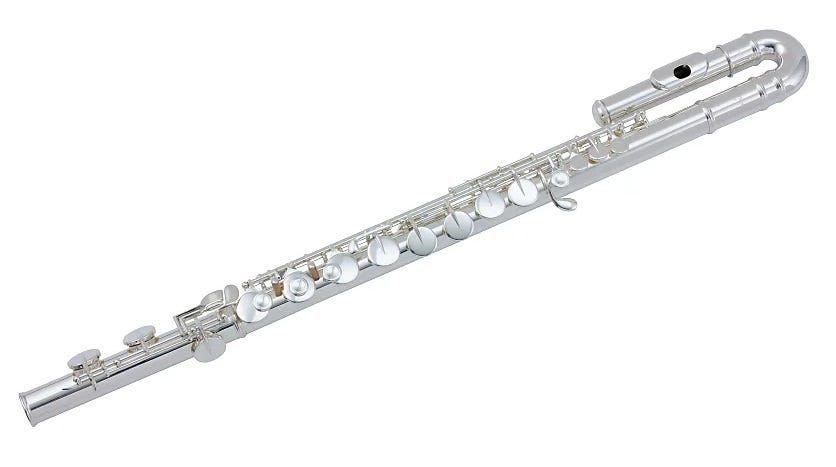 When most people think of the flute, they picture the bright, silvery tone of the standard concert flute. But there’s another member of the flute family with a deeper, richer voice: the alto flute. Whether you’re an advanced flutist looking to expand your repertoire or just curious about different flutes, this instrument is worth exploring.
When most people think of the flute, they picture the bright, silvery tone of the standard concert flute. But there’s another member of the flute family with a deeper, richer voice: the alto flute. Whether you’re an advanced flutist looking to expand your repertoire or just curious about different flutes, this instrument is worth exploring.
🎶 What Is the Alto Flute?
The alto flute is pitched in G, a fourth below the concert flute, and has a noticeably larger body and wider embouchure hole. Because of its size, it requires more air and a slightly adjusted embouchure, but the payoff is a haunting, mellow sound that blends beautifully in ensembles and stands out in solo work.
🔍 How Is It Different from the Concert Flute?
| Feature | Concert Flute | Alto Flute |
|---|---|---|
| Key | C | G |
| Sound | Bright and clear | Deep and mellow |
| Size | Standard | Longer and wider |
| Use in Ensemble | Common | Less common, unique color |
| Transposition | Non-transposing | Transposes a perfect fourth down |
Playing the alto flute may take a bit of adjustment, especially for younger students or those with smaller hands, but once you get the feel for it, many flutists fall in love with its tone.
🎵 Where Is the Alto Flute Used?
The alto flute is used in:
-
Flute choirs and large ensembles
-
Film scores and orchestral works
-
Jazz, world music, and contemporary compositions
-
Select classical and chamber music pieces
Famous composers like Debussy, Holst, and Stravinsky have written parts specifically for the alto flute. You can also find modern works, original songs, and custom arrangements that feature this beautiful instrument.
🎓 Is the Alto Flute Right for You?
If you’re taking advanced flute lessons or playing at an advanced level, the alto flute could be a great addition to your instrument collection. It broadens your range, gives you more options for ensemble work, and challenges your breath control and tone production.
💡 Tips for Getting Started
-
Try before you buy – Many music stores offer rentals.
-
Consider a curved headjoint – Especially helpful for smaller players.
-
Practice long tones – This helps build the air support needed for the lower register.
-
Play familiar pieces – Start by transposing simple melodies you already know to get used to the feel.
🌟 Final Thoughts
The alto flute adds depth and character to any flute section or solo performance. As a country flutist, I love using different flutes—including the alto—to explore new sounds, styles, and moods. Whether you’re playing traditional Irish melodies, etudes, or something more modern, the alto flute opens up exciting musical possibilities.

















